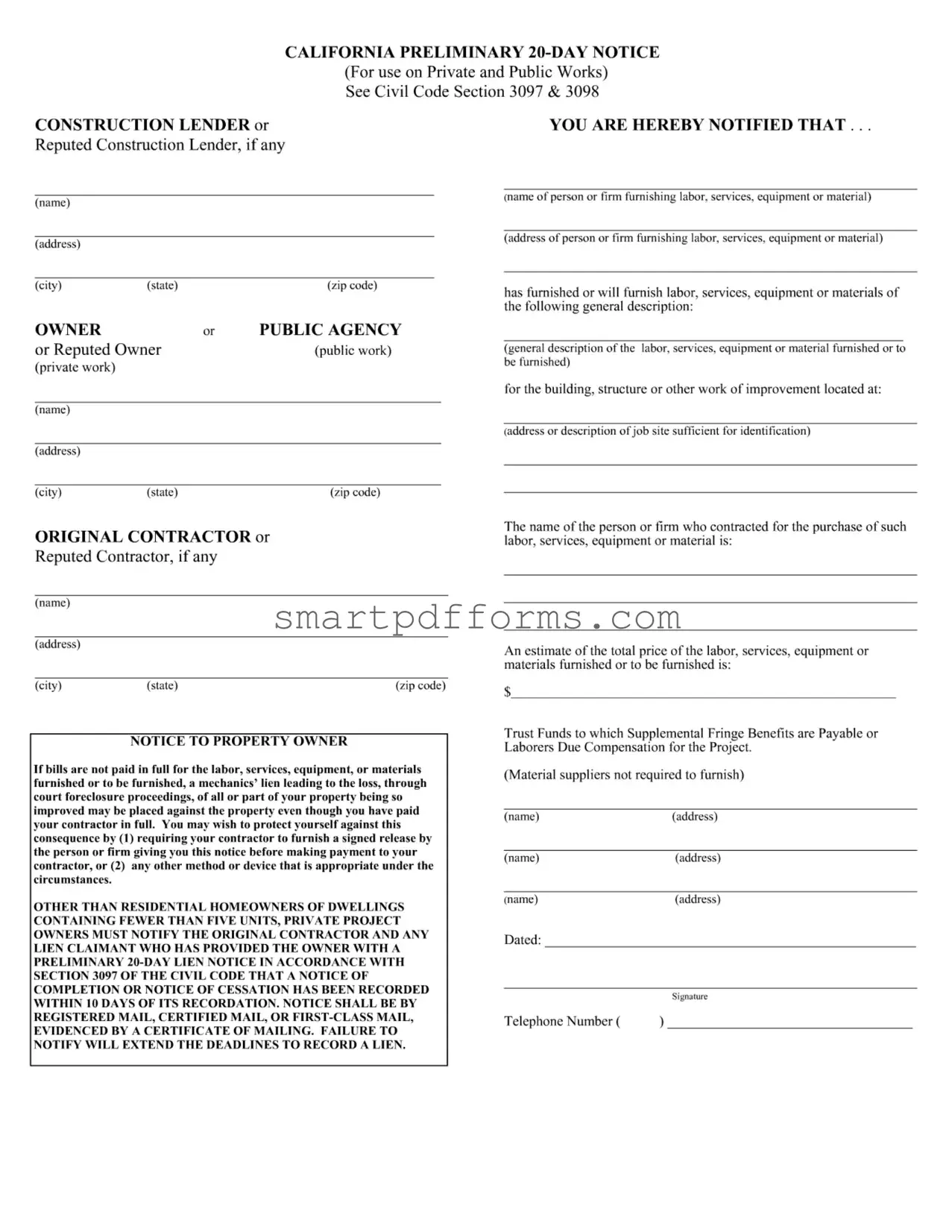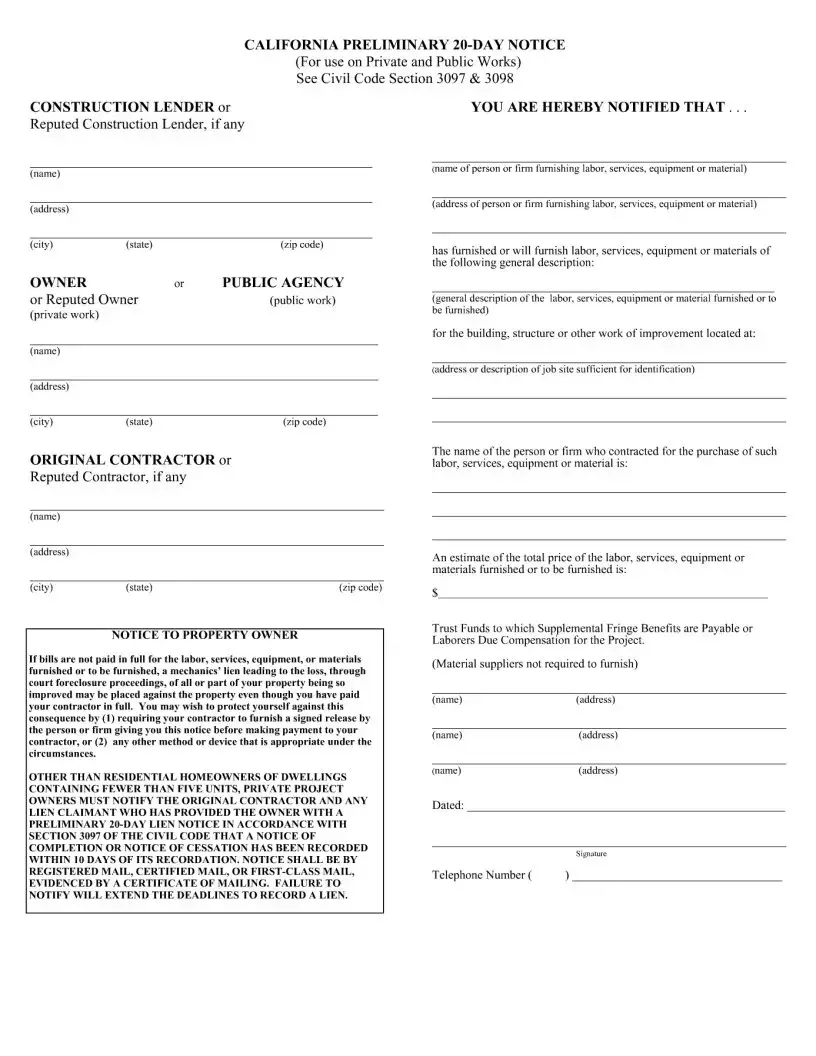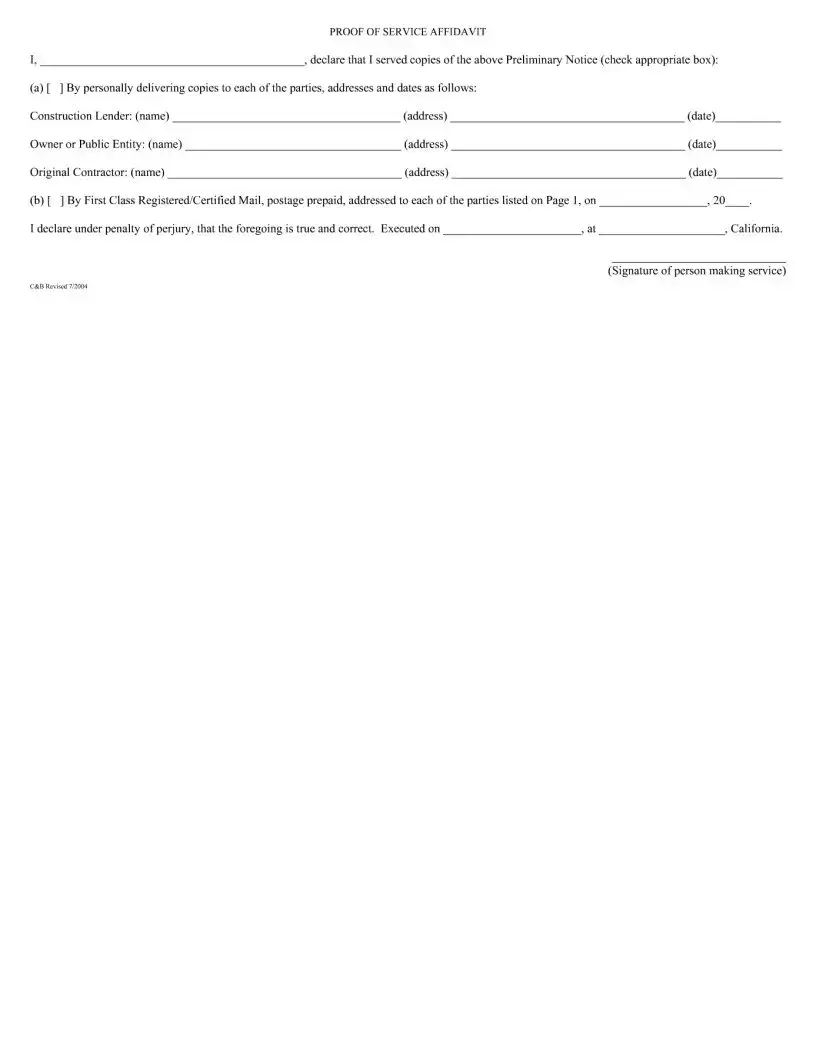Blank California Preliminary 20 Day Notice PDF Template
The California Preliminary 20 Day Notice is a mandatory declaration for entities providing labor, services, equipment, or materials to any private or public construction project, informing relevant parties about their involvement and protecting their right to file a mechanic’s lien if not paid. This form serves as a crucial communication tool between contractors, suppliers, property owners, and other stakeholders, ensuring transparency and facilitating the payment process for work performed. For anyone involved in a construction project in California, understanding and correctly filling out this form is vital to safeguard their financial interests.
To ensure you properly secure your rights and interests on any construction project, click the button below to fill out the California Preliminary 20 Day Notice form.


